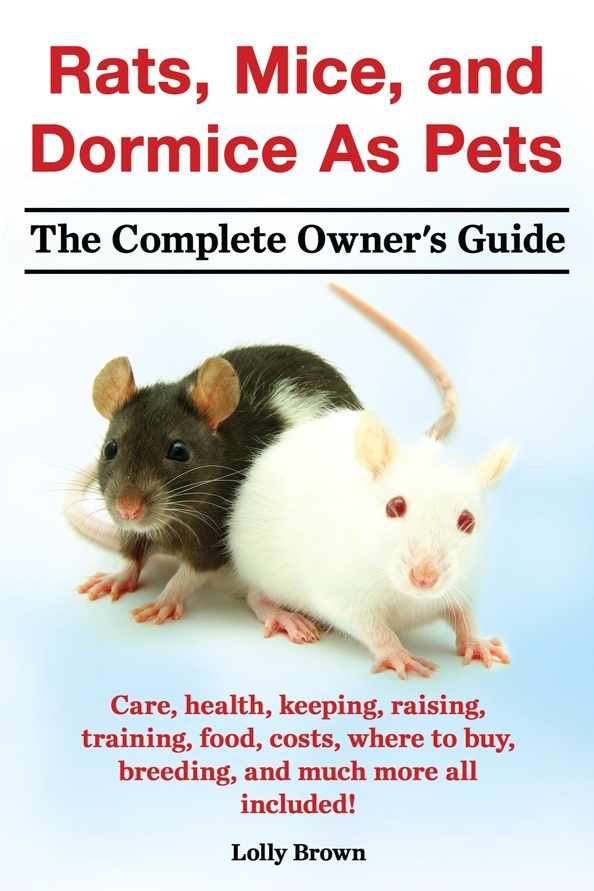TABLE OF CONTENTS
- Foreword 1
- Acknowledgements 5
- Table of Contents 7
- Chapter 1 – Rats, Mice, and Dormice 13
- What are Rats? 14
- Roof Rats 14
- Norway 14
- Domesticated Rats 15
- What are Mice? 17
- Common House Mouse 17
- Feeder Mice 18
- Fancy Mice 18
- Laboratory Mice 19
- Wild Mice 19
- What Are Dormice? 19
- History of the Rodent Fancy 20
- Rats, Mice, and Dormice as Pets 23
- Discussing Life Span 25
- Allergies 26
- With Children 26
- With Other Pets 27
- Pros and Cons of Rodents as Pets 28
- Chapter 2 – The World of the Rodent Fancy 31
- Body Types 32
- Coat Varieties 32
- Coats Common to Rats and Mice 33
- Specific Mice Coats 34
- Specific Rat Coats 35
- Recognized Mouse Colors 36
- Recognized Mouse Color Patterns 39
- Recognized Mouse Markings 41
- Recognized Rat Colors 43
- Provisional Colors 45
- Recognized Rat Markings 46
- Standardized Rat Color Patterns 50
- New Varieties – January 2014 52
- Chapter 3 – Buying Rats, Mice, and Dormice 55
- Sources for Rats and Mice 55
- Picking a Healthy Rat 56
- Picking a Healthy Mouse 57
- Picking a Healthy Dormouse 58
- Recommended Purchase Age 58
- One or Two? 58
- Determining Gender 59
- Bringing Your New Pets Home 60
- Chapter 4 – Daily Care 63
- Mice: Selecting a Habitat 63
- An Aquarium with a “Topper” 63
- Wire Cages 64
- Habitrails 64
- Travel Carrier 65
- Rats: Extra Habitat Considerations 66
- Dormice: Extra Habitat Considerations 68
- Considering Custom Cages 70
- Observations on Cage Placement 70
- Temperature Considerations 71
- Choosing a Substrate and Bedding 72
- Nest Boxes 73
- Cage Maintenance 74
- The Matter of Escapes 75
- Diet and Nutrition 77
- Feeding Your Mouse 77
- Feeding Your Rat 80
- Feeding Your Dormouse 81
- Hydration 82
- Toys and Intellectual Stimulation 82
- Bathing 83
- Training Your Pets 84
- Chapter 5 – Health and Breeding 87
- Observe Your Pets Carefully 88
- Understanding Prophyrin 89
- Common Illnesses and Health Problems 89
- Respiratory Infections 90
- Growths, Lumps, and Tumors 91
- Excessive Scratching 92
- Diarrhea 93
- Bumblefoot 93
- Ringworm 94
- Swelling of the Abdomen 94
- Old Age 94
- Zoonotic Diseases 95
- Spaying and Neutering 96
- Breeding Companion Rodents 96
- Fertility in Females 97
- Should You Breed Rats, Mice, and Dormice? 98
- Chapter 6 – An Overview of Rodent Shows 99
- Rodent Show Basics 99
- American Fancy Rat and Mouse Association 99
- Recognized AFRMA 100
- Overall Characteristics of Show Mice 102
- Recognized AFRMA 102
- Overall Characteristics of Show Rats 103
- The National Mouse Club 104
- The National Fancy Rat Society 104
- Chapter 7 – Frequently Asked Questions 107
- Chapter 8 – Breeder Directories 115
- Rat Breeders – US 115
- Rat Breeders – UK 119
- South East England 119
- South West England 124
- East of England 126
- Midlands 129
- North of England 133
- Scotland 138
- Ireland 139
- Mainland Europe 139
- Mouse Breeders – US 141
- Mouse Breeders – UK 143
- Dormice Breeders 143
- Afterword 145
- Relevant Websites 147
- Glossary 149
- Index 153

